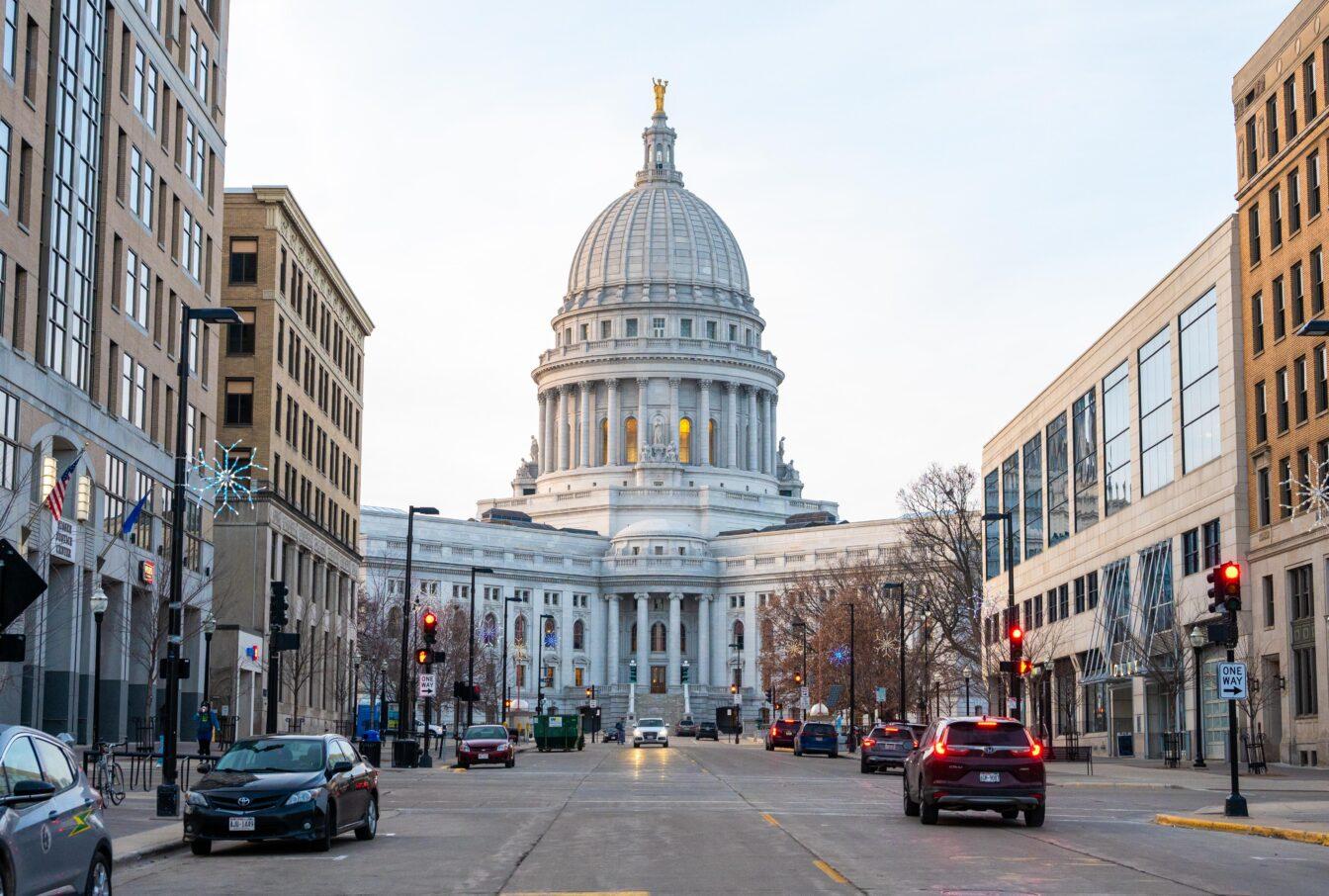Gov. Tony Evers signed new state legislative maps into law Feb. 19. The maps are intended to better reflect Wisconsin’s status as a competitive “purple” state, according to a press release from Evers’ office.
Under previous maps, the Republican Party had supermajorities in both chambers of the Wisconsin State Legislature, according to senior staff attorney with the State Democracy Research Initiative at the University of Wisconsin Law School Derek Clinger.
“The way they [the new maps] are drawn, it’s much more likely that whichever party gets the most votes statewide will control the Legislature, and that’s a big change from the current maps,” Clinger said.
Political science professors Bernard Grofman and Jonathan Cervas were hired by the Wisconsin Supreme Court to examine proposed legislative maps, according to the Milwaukee Journal Sentinel.
Their hiring followed a December 2022 ruling by the Wisconsin Supreme Court to discard of the former maps.
When assessing new maps, Grofman and Cervas looked for certain criteria including population equality, contiguity and honoring the Voting Rights Act, according to the Journal Sentinel.
An additional lawsuit was filed in January challenging the state’s congressional maps, in which the plaintiffs hope to receive similar results, according to Clinger.
The Wisconsin State Legislature may consider an overhaul of the redistricting process that would put a new process in place for the next redistricting cycle, Clinger said. Fall 2023, there was talk in the Legislature of adopting an “Iowa-style” system in which maps are drawn by a nonpartisan entity, he said. But the Legislature’s actual proposal would have allowed the Legislature to disregard the nonpartisan entity’s suggestions and adopt its own plan.
Clinger emphasized how the court’s decision will impact young people’s votes. There will be more competitive districts throughout the state, so anywhere there are young people, their votes will matter more, he said.
Democratic law firm asks Wisconsin Supreme Court to redraw maps
“This is all about your representation and the government you’re going to have,” Clinger said. “It looks like the maps will be much more reflective of the state’s population, and the policy … might be more reflective of what people want, as opposed to one segment of the state’s desires.”
The Wisconsin Constitution limits the Legislature’s ability to enact new maps until the first legislative session after the decennial U.S. census, Clinger said. Given this provision, it is unlikely the Legislature will consider state legislative maps again until the next U.S. census in 2030, unless there is a successful legal challenge, he said.
In other states, there is a push to empower independent commissions to draw and adopt district plans with extensive public input, rather than leaving the process to politicians, Clinger said. There may be discussions in the Legislature about efforts like these in the coming years, he said.


















